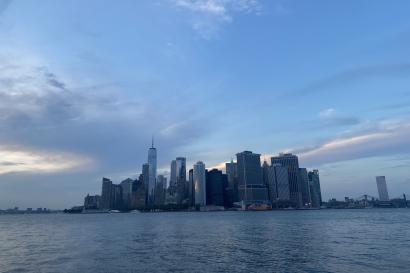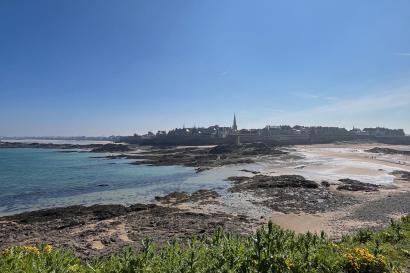My time abroad is quickly running out, and so is my cash.
After a handful of weekend trips and some financial irresponsibility (mis-booked flight tickets, vintage cowgirl boots, several novels) I’ve reached a low point wherein I find myself having to budget every single day. With the fuel shortage in Europe worsening as conflict between Russia and the Ukraine mounts, flights have been increasingly expensive compared to years past. I began planning my trips out of Italy based on which cities I could reach for the cheapest fares. My instinct told me Brussels, Berlin, Prague, or Vienna; I was floored in discovering that flying to Paris was my best option.
…
Two full days in Paris, mid-November.
The most expensive thing in Paris is the food, so let me begin with admitting to having not eaten at a single restaurant. Not once. Whenever I stumbled across a cheap bite I grabbed it; I didn’t consume a single vegetable in the city. There are patisseries and boulangeries everywhere, and a croissant is typically less than two euros. Enough said.
I had one other lifeline besides bread: The Tuileries Garden Christmas Market, which had just opened when I discovered it. Between the Tuileries and Concorde metro stops, this market stretches in one long shot, claustrophobically packed with carousels, artisan sellers, and an abundance of street food. Sausage, soups, fries, fish, waffles, churros, wine and beer, candy, desserts. Personally, my time in Paris was fueled by a lot of mulled wine and roasted chestnuts (it was cold, and the wine was really good).
Besides food, paying for somewhere to stay always leeches away at your savings. I chose to board for a cheap fare in the women’s hostels at Hotel Madrigal, which were kept clean and were conveniently located across the street from a metro station. The girls staying there were women like me: trying to do the most with the least. This solidarity established an unspoken trust: I never worried about my personal safety or my belongings being stolen (just make sure you bring a towel, which I did not).
The thing about visiting any major city is that experiences can be found anywhere. My first morning was spent in the Louvre, where I was permitted free access using my Italian student ID. Near the Louvre, along the Tuileries Garden, I also visited L’Orangerie: Paris’s Impressionist museum. In every gallery, I stood face-to-face with paintings I had only ever studied in art history classes (from a distance of six yards I even saw the Mona Lisa, profoundly small behind her roped-off glass cube).
From there I made my way to the Galeries Lafayette, where glowing Christmas decorations had freshly been displayed in their shop windows and within the central rotunda. Eight floors of department-style shopping coiled around an art installation of an enormous Christmas tree, made up of hundreds of thousands of lights in the shapes of ornaments and holly leaves. Disregard the overpriced sweaters and swarms of people: to see the tree alone is all you need.
I ended that night with an obligatory visit to the Eiffel Tower. From the northern part of the city, you must only walk west along the Seine River, as the tower grows larger and nearer, until finally you find yourself in the Champ des Mars. Every night on the hour, the tower shimmers in a spectacular frenzy of lights. If you’re only going out of your way to see the Eiffel Tower once, plan to go after sundown. Though I’m fully aware of how trite this sounds, witnessing it rendered me speechless.
My second day began at Sacré Coeur in Montmartre. The village is a hike north of the Seine, located in the 18th arrondissement. For this trip I used the metro, which cost me a meager 1.90 euros. In Montmartre the early holiday spirit continued; streets were strung in snowflake-shaped lights, storefronts were adorned in red and green, and vendors sold vin chaud in the street for 3 euros (another cold, rainy day: mulled wine rescued me again). Atop the steep hill of the Basilique du Sacré Coeur, I found a stunning aerial view of the city, and could distinguish the Eiffel Tower where it stood three miles south through a haze of rain.
After a hot shower and another pit stop at the Christmas Market, I visited my last destination: the Catacombs. As an Art History student studying in Europe, I was granted free entry. After winding down a spiral staircase for what felt like an eternity, and venturing through the convolution of dark tunnels, I was dumbfounded upon reaching the burial site. Deep beneath the city of Paris, 6 million human skeletons are piled seven feet high, meticulously sorted into layers of femurs and skulls. You’ll find fascinating infographics throughout the museum telling the story of these millions of nameless parisians, so I won’t spoil it for you now.
On the morning of my outbound flight, I sat outside a cafe over an espresso doppio and an apple, watching as people pushed strollers and walked their dogs. It was drizzling again, and the headlights of passing cars reflected yellow paint smears in the wet cobblestoned streets. My barista was friendly and happily spoke in English, as did most people.
After doing Paris on the bare minimum, I have to say people get the wrong idea about it. The inflated idea of Paris distracts from the sweet underscoring of the city. Because my greatest concerns were expenses and the technicalities of travel, every vain anxiety about physical appearance, impressions, and image dissipated. The romance of Paris lies just beneath a mirrored facade: people must look past themselves when visiting the city to truly experience it. Paris is more than an Instagram post: it is history, art, culture, and two million *living* people for you to meet.
So grab your bag, leave the lace bralette, and go.
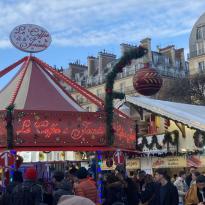
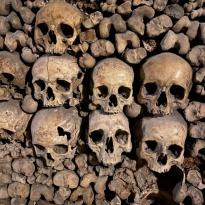
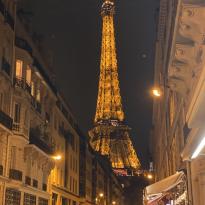




Olivia Bozuhoski
My name is Olivia Bozuhoski, and I am a Boston-based Arts Administration student. I love painting, reading, journaling, hiking, wine, and learning about art history. I am thrilled to be in Italy this semester, and even more thrilled to be sharing the experience with students like myself.







